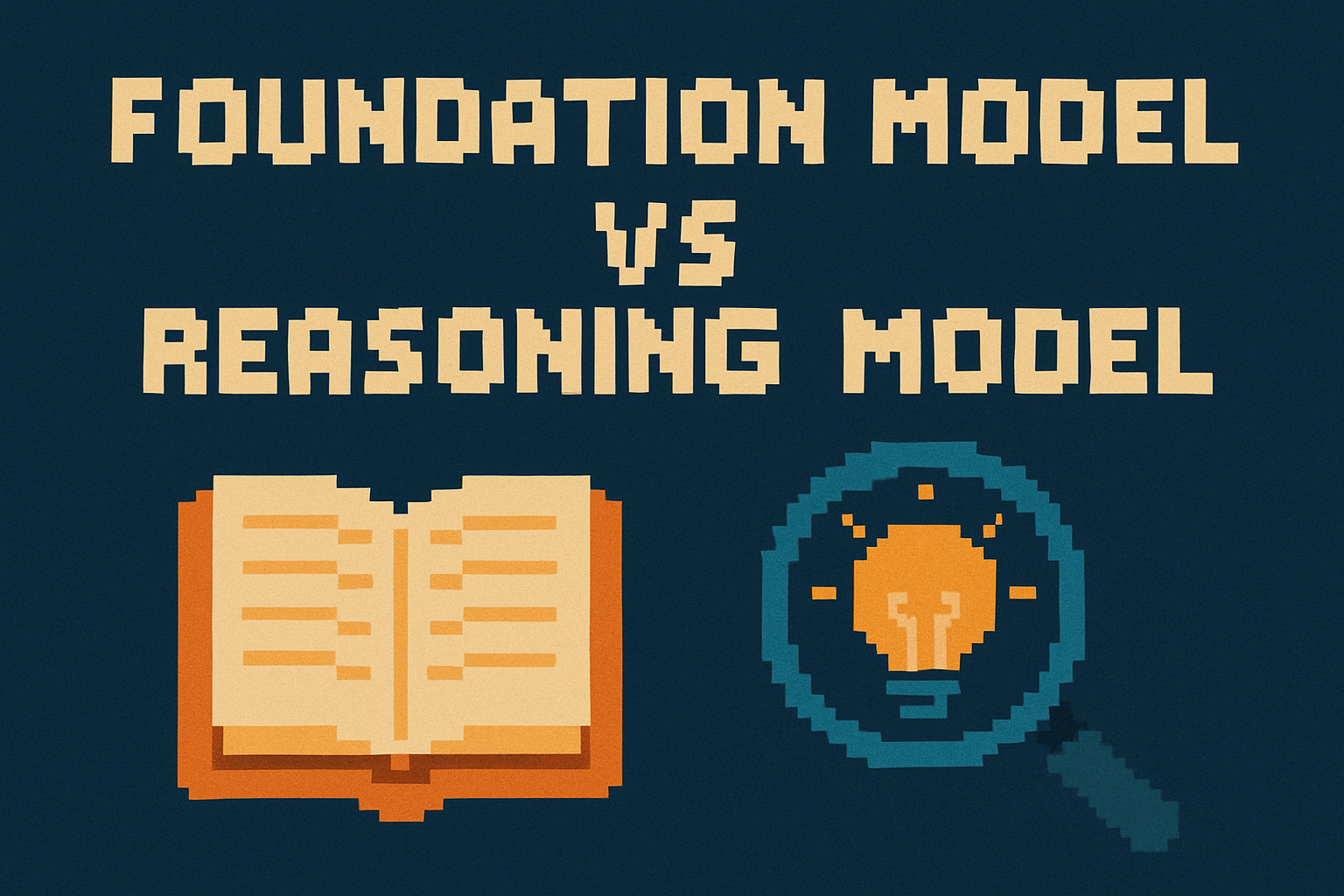Foundation Model vs. Reasoning Model: What’s the Difference (and Why It Matters)

If you’ve been diving into the world of large language models lately, you’ve probably heard terms like foundation model and reasoning model tossed around, but what do they actually mean? And more importantly, when should you use one over the other?
I get this question all the time. So let’s break it down in plain English. Think of foundation models as encyclopedias. They know a lot and they can generate answers in a single go. Reasoning models, on the other hand, are more like logic puzzles. They think through things step by step.
That difference has big implications depending on what you’re building, especially if you care about transparency, explainability, or complex decision-making.
Key Takeaways
Foundation models are broad, general-purpose models trained on massive datasets. They’re great for tasks that need speed, fluency, and coverage across many domains.
Reasoning models are purpose-built to solve complex, multi-step problems with logical flow and transparency. They’re used when the “how” matters as much as the answer itself.
Use foundation models when you need one-shot answers, like summarizing documents, answering FAQs, or generating creative content.
Use reasoning models when your task requires breaking down problems into steps—like financial analysis, legal reasoning, or multi-variable decision-making.
Transparency and validation are strengths of reasoning models. They don’t just answer—they show why and how they reached the answer.
What Is a Foundation Model?
A foundation model is your generalist. It’s been trained on an encyclopedia’s worth of multimodal data—text, images, code, audio—and can handle a wide range of tasks.
These models are often:
- Pretrained at massive scale
- Fine-tuned for specific applications
- Used in “one-shot” or “few-shot” generation tasks
Need to generate text from a prompt? Summarize an article? Translate a paragraph? That’s foundation model territory. It takes your input and gives you a fluent, useful response—fast.
What Is a Reasoning Model?
Reasoning models are built for tasks that can’t be solved in one pass. Instead, they reason step-by-step—like solving a math problem, evaluating a loan application, or analyzing stock performance.
These models:
- Break down prompts into multiple steps
- Use techniques like chain-of-thought prompting
- Often verify their own answers before returning them
- Are designed for logic, not just language
If a foundation model is a sprinter, the reasoning model is a detective—methodical, precise, and built to justify its conclusions.
When to Use Each
| Task | Use a Foundation Model | Use a Reasoning Model |
| Chatbot for FAQs | ✅ | |
| Writing marketing content | ✅ | |
| Medical diagnosis tool | ✅ | |
| Financial risk analysis | ✅ | |
| Legal document review | ✅ | ✅ (for complex cases) |
| Math problem solver | ✅ |
Why This Matters for AI Builders
Here’s the key insight: foundation models are fast, flexible, and wide-reaching, but if your use case requires transparency, auditing, or multi-step logic, you’re going to hit limitations fast.
I’ve seen teams build amazing LLM-based apps that totally fall apart when stakeholders ask, “How did it reach that conclusion?” Reasoning models solve that by making the logic visible.
If you’re building apps for healthcare, legal, finance, or anything where why matters as much as what, reasoning models are going to be your best friend.
Let’s Keep the Conversation Going
Working on something that needs deep reasoning, not just fast answers? I’d love to hear how you’re approaching it, and help you choose the right architecture for the job.
Reach out or drop a comment below.
Let’s build smarter AI together.



